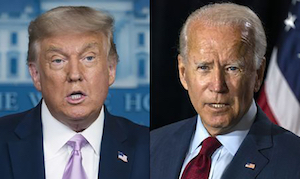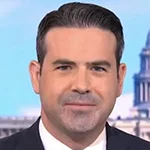President Trump heralds a decisive media advantage over Democratic nominee Joe Biden, according to new data from performance marketing company What If Media Group.
What If’s survey discovered that, with exactly nine weeks to go until Election Day, Trump holds a disproportionate lead in terms of both earned and paid media coverage, and maintains a large advantage in every other promotional medium analyzed by the survey.
 |
Two-thirds of survey respondents (65 percent) said they often see or hear about President Trump in the news, compared to only a little more than a quarter (27 percent) who said the same for Biden.
When asked if they’ve seen TV ads supporting the candidates, more than a third (34 percent) of respondents said they’ve seen pro-Trump ads while only 18 percent have seen ads supporting Biden.
A quarter (26 percent) said they’ve seen “many” online ads in support of Trump, nearly double the 14 percent who said they’ve seen “many” online Biden placements.
When it comes to email newsletters, 22 percent have received “many” such dispatches in support of Trump, more than two times the 10 percent who’ve received a similar number of email newsletters supporting Biden.
More than one in five respondents (21 percent) said they’ve seen Trump lawn signs, compared to only nine percent who’ve seen Biden lawn signs.
In addition to dominating in news coverage and advertisements in addition to digital and outdoor media, it appears Trump also leads in terms of a perceived level of clarity concerning his political agenda.
When asked to rate the clarity of the candidates’ policy agendas—on a scale of one to 10—21 percent ranked Trump’s policy agenda clarity a “10” while only 12 percent gave a “10” ranting to Biden.
What If Media Group CEO Josh Gillon told O’Dwyer’s that the survey presents a number of factors that could spell trouble for the Biden campaign.
“For starters, our polling for the past few months has consistently shown that the election is far tighter than most of the other published polls indicate,” he said. “Significantly, we are polling a much larger data sample than many others, and our audience reflects a broader cross-section of American voters. Because of these factors, Biden’s campaign needs to continue pushing hard with their political advertising to reach a broader audience with effective messaging.”
Gillon said another interesting phenomenon his company’s findings have uncovered is the notion that Trump supporters appear more passionate about showing up to the polls than Biden supporters.
“This behavior suggests that we can probably expect a higher turnout for in-person voting from Trump supporters, so that on the day of the election, based on those polls that are so widely watched, we may see Trump doing very well compared to Biden. Furthermore, we’ve observed that Biden supporters are more likely to vote by mail, which could create serious post-election drama.”
What If Media Group’s survey polled more than 8,890 randomly-selected U.S. adults online between late July and early August.


 Husch Blackwell Strategies has added FleishmanHillard alum Michael Slatin as a principal in its public affairs group.
Husch Blackwell Strategies has added FleishmanHillard alum Michael Slatin as a principal in its public affairs group. Rory Cooper, a veteran Republican operative and policy specialist, has joined Teneo’s Washington office as senior managing director in its strategy & communications practice.
Rory Cooper, a veteran Republican operative and policy specialist, has joined Teneo’s Washington office as senior managing director in its strategy & communications practice. Brian Fallon, who served as national press secretary for Hillary Clinton’s 2016 presidential run, is signing on next month as Vice President’s Kamala Harris’ campaign communications director.
Brian Fallon, who served as national press secretary for Hillary Clinton’s 2016 presidential run, is signing on next month as Vice President’s Kamala Harris’ campaign communications director. TikTok is nothing more than a Chinese propaganda tool that poses “a grave threat to America’s national security and, in particular, impressionable children and young adults,” say two Congressmen who want the platform registered as a foreign agent.
TikTok is nothing more than a Chinese propaganda tool that poses “a grave threat to America’s national security and, in particular, impressionable children and young adults,” say two Congressmen who want the platform registered as a foreign agent. Public Strategies Washington has added Abbie Sorrendino, a former aide to now Senate Majority Leader Chuck Schumer.
Public Strategies Washington has added Abbie Sorrendino, a former aide to now Senate Majority Leader Chuck Schumer.


 Have a comment? Send it to
Have a comment? Send it to 
No comments have been submitted for this story yet.